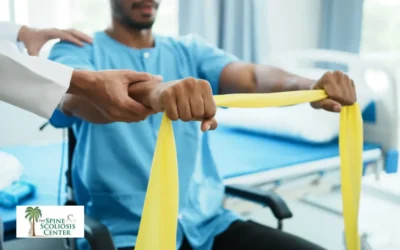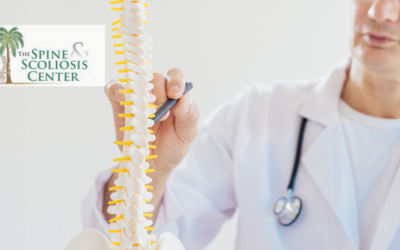The spinal column is composed of 33 individual bones, which provide the main support for your body. The spine allows you to stand up, twist, bend, and most while protecting the spinal cord from injury. Every part of your body is impacted by your spine and impacts it in return. Here is an overview of the anatomy of the spine and its structures.
Spinal Curves
An adult spine bears a natural S-shaped curve. The neck and lower back regions have a slight concave curve and the thoracic and sacral regions have a slight convex curve, which both work in conjunction like a coiled spring to maintain balance, absorb shock, and allow for your range of motion.
Muscles
Extensors and flexors are the two main muscle groups that affect the spine. The extensor muscles are attached to the back of the spine and allow you to stand up and lift things. The flexor muscles, which include the abdominal muscles, are in the front and allow for forward flexing and bending. They are also essential for lifting and controlling the lower back. Your back muscles stabilize the spine, and misalignment can put incredible strain on your spine.
Vertebrae
The 33 individual bones that interlock with each other in your spine are called vertebrae. They are divided into the cervical, thoracic, lumbar, sacrum, and coccyx regions that all play key roles in movement and general health.
Intervertebral discs
There is an intervertebral disc between each vertebra, which acts like a cushion that keeps the bones from rubbing together. Discs are designed like a radical car tire, with crisscrossing fibrous bands like a tire tread in the outer ring (annulus).
Vertebral arch & spinal canal
Behind each vertebra are bony projections that form a vertebral arch. The arch is composed of two supporting pedicles and two laminae. The spinal cord, fat, ligaments, and blood vessels are held inside the hollow spinal canal. A pair of spinal nerves exit under the spinal cord under each pedicle to branch out to your body.
Facet Joints
Each vertebra has four facet joints, which are what allow your spine to move. One pair of facet joints connects to the vertebra above and one pair connects to the vertebra below.
Ligaments
Ligaments are strong fibrous bands that stabilize the spine, protect the discs, and hold the vertebrae together. There are three major ligaments of the spine:
- The ligamentum flavum
- The anterior longitudinal ligament
- The Posterior longitudinal ligament
Spinal Cord
The spinal cord is about as thick as your thumb and around 18 inches long. This cord runs from the brainstem to the 1st lumbar vertebra inside the spinal canal. The spinal cord can be thought of as an information superhighway, transmitting messages between the brain and the body.
Spinal nerves
There are thirty-one pairs of spinal nerves that branch off the spinal cord and act as “telephone lines,” relaying messages between your body and spinal cord to control movement and sensation. The spinal nerves form a striped pattern across the body (dermatomes) and innervate specific areas.
Coverings & Spaces
Three membranes cover the spinal cord: The pia mater, the arachnoid mater, and the tough dura mater. Between these membranes are spaces that doctors use to diagnose and treat diseases.
Contact Us Today
The spine is a complicated and wondrous machine, and if there is a problem with any part of the spine, there may be severe symptoms that impact your health and wellbeing. Call The Spine and Scoliosis Clinic to schedule a consultation with a spinal specialist today.




0 Comments